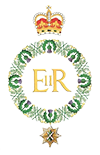THE COLD WAR 1945 – 1990
Following the end of the Second World War there was to be no return to the traditional round of peace time soldiering as occurred after 1918. The period is marked by the variety of roles required from and commitments of the Army, in particular low-intensity operations from the infantry. Reductions in the size of the Army led to amalgamations and disbandments of many famous Regiments while at the same time unforeseen crises requiring military action created severe strain on the forces remaining. ‘Overstretch’ became a familiar theme. National Service, initially for eighteen months but, from 1949, for two years, was introduced to provide the manpower to meet this. It lasted until the final men were called up in 1960 with the announcement of the introduction from 1962 of all-regular forces (plus, for the Army, the TA).
In Europe the post-war occupation forces remained in Germany, Austria and other former Axis areas. From 1949 these became part of The North Atlantic Treaty Organisation (NATO) as a deterrent against the Russian threat as wartime alliance changed to ‘Cold War’. Outside Europe the Palestine problem continued until the creation of the state of Israel in 1949. The transition of former Colonies to independence was not always peaceable. The containment of Communist expansion in Malaya and Korea demanded the deployment of large forces. In 1969, the Army had to be deployed to support the Police in Northern Ireland and remained in that role, in often very considerable numbers, right through to July 2007.
The intensity of activity over the period from 1945 to the end of the Cold War in 1990 is demonstrated by the fact that the 1st Battalion changed station over 30 times in that time and covering from the UK to Korea. Many of these moves required reorganisation, adopting a new role and familiarisation with new equipment. In addition eleven ‘emergency’ tours were carried out requiring a move at short notice to some critical situation – latterly normally to Northern Ireland.
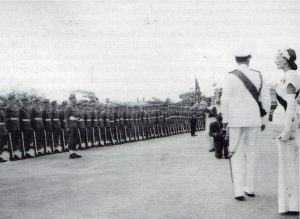
Earl Mountbatten, last Viceroy of India, moves to inspect the 1st Battalion Guard of Honour at The Pakistan Independence Parade
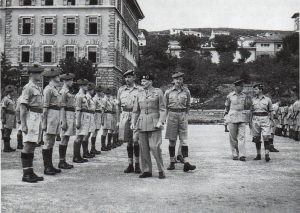
Field Marshal Montgomery visiting the 2nd Battalion in Trieste, July 1948
In December 1945 the 1st Battalion was posted from India to Singapore and Malaya until January 1947 when it moved to Karachi where it remained until the partition and emergence of the separate states of India and Pakistan, including providing the Guard of Honour for the Pakistan ceremony of Independence. It sailed for home in December, one of the last British battalions to leave the sub-continent, and nearly six years after they had left for Burma. On arrival it moved to Dreghorn Barracks in Edinburgh to assume the role of Training Battalion for the then four Lowland infantry regiments. Meanwhile the 2nd Battalion remained in Palestine maintaining order between Arabs and Jews apart from a four month tour in the Canal Zone. Two members of the Battalion were killed during these operations. April 1946 it moved to Malta and then, in June 1947, to Trieste as part of of the occupation force in an area disputed between Italy and Yugoslavia. At the end of 1948 they too returned to Edinburgh where, on 9 February 1949, they amalgamated, on a very wet parade, with the 1st Battalion as part of the reduction in Army force levels after the independence of, and therefore no longer need to garrison, India and Pakistan.
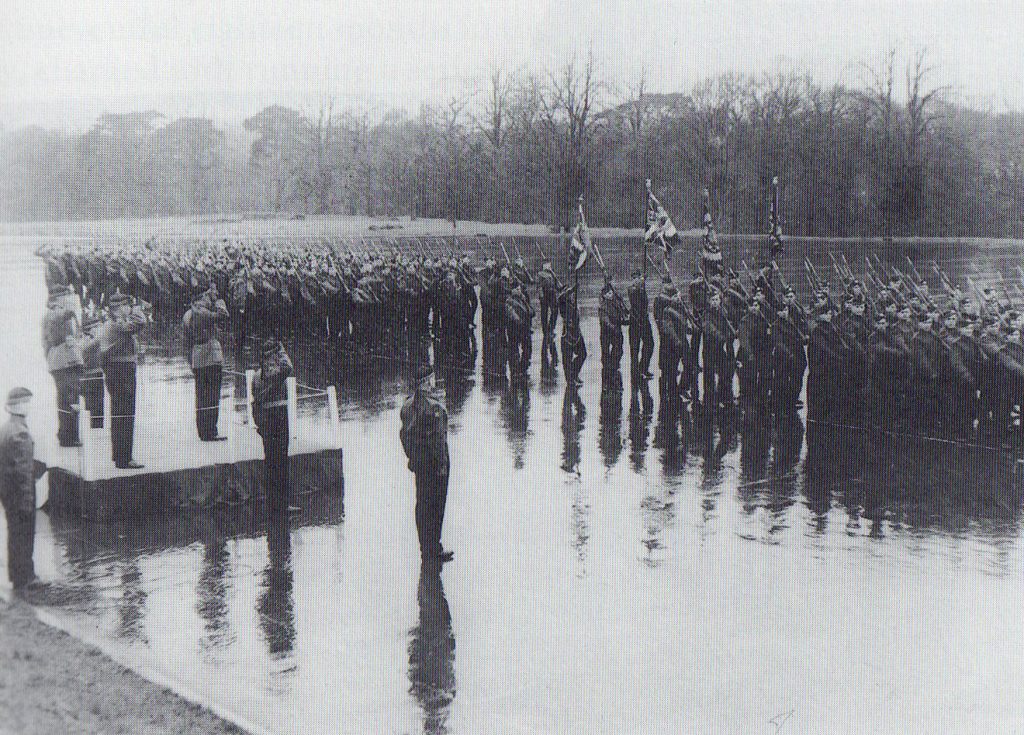
The Amalgamation Parade of the 1st and 2nd Battalions, Dreghorn Barracks, Edinburgh, 9 Feb 1949
This was the first time the Regiment had been reduced to one regular battalion since 1686 (262 years), a unique record for a Regiment of the Line. In the meantime both the 7th/9th and 8th Territorial Battalions having initially been stationed, and employed, as part of the occupying force in Germany had been disbanded respectively in June and February1946 only to be reconstituted as part of the re-formed Territorial Army(TA) in the spring of 1947.
In February1951 the 1st Battalion moved to West Germany to join The British Army of the Rhine (BAOR) as part of Britain’s contribution to NATO. Initially they were stationed in Munster but moved to Wuppertal in December. In May 1952 they moved again, this time to Berlin which remained a city occupied and governed by the wartime Allies, The United States, France, Russia and Great Britain. They remained there until April 1953 when they returned briefly to transit through Top Camp, next to Glencorse, before sailing for Korea. On 26 July1962 HRH The Princess Royal, the Colonel-in-Chief, had opened the Regimental Monument just below The Mound in West Princes Street Gardens.
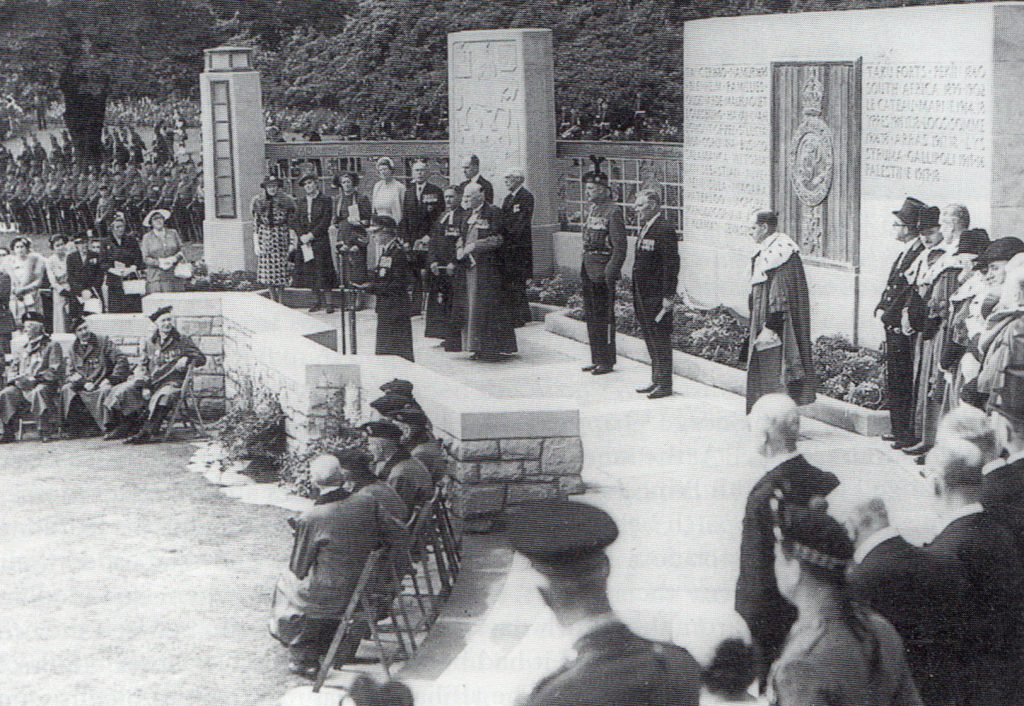
HRH The Princess Royal, Colonel-in-Chief, unveiling The Regimental Monument in West Princes Street Gardens, Edinburgh, on 26 July 1952
In 1950 Communist North Korea, backed by Russia and, later, China, invaded South Korea. The United Nations, under US leadership, immediately deployed considerable forces in support of South Korea. The British contribution expanded from a single Brigade to the 1st Commonwealth Division including troops from Canada, Australia, New Zealand and India. The 1st Battalion were posted to relieve The Black Watch. They sailed from Southampton on the evening of 2 June, Coronation Day, the Colour Party having taken part in the Coronation Parade in London that day and handing over the very damp Colours to a Regimental party from the Depot as they went up the gangplank. The Battalion landed at Pusan on 7 July and carried out intensive training until they were due into the line on 29 July. On the evening of 26 July it was announced that a truce would be signed the following morning and that a cease fire would be effective from 2200 hours that evening. At that time a Royal Scots bugler sounded the ‘Cease Fire' which echoed round the valleys. It was, however, only a truce and the Battalion spent a busy year occupying and improving the front line while carrying out much training. Sadly three members of the Battalion died in accidents during the tour, two in drownings and one in a tent fire.
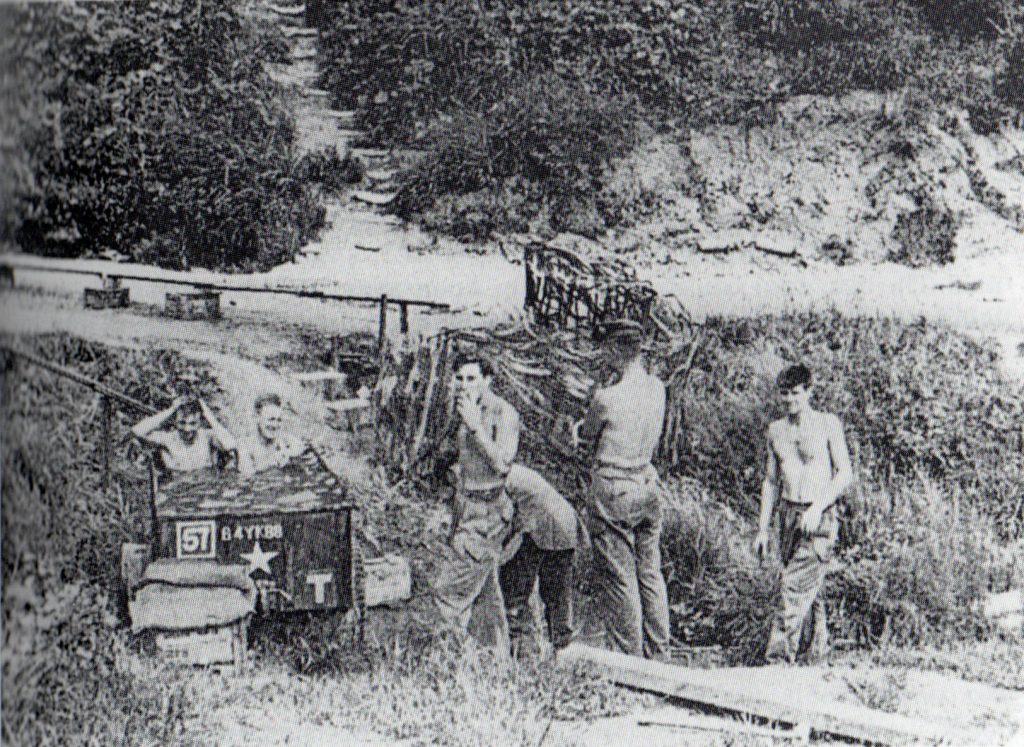
A jeep trailer bath in Korea
In April 1954 the Regiment moved back into its Headquarters and Depot at Glencorse outside Edinburgh. The Battalion remained in Korea until June 1954 when they moved to the Suez Canal Zone in Egypt. Since the end of World War 2 the Egyptians had been trying to remove the British presence by civil disorder, murder and hit and run shooting attacks. The Battalion therefore had to adapt from the role of general war to one of internal security. Meantime another uprising against British rule had broken out in Cyprus when the EOKA terrorists, seeking Enosis, or union with Greece, began the now familiar pattern of riots, assassinations and sabotage followed by guerilla attacks from their hides in the Troodos Mountains. In September 1955 the Battalion was moved at short notice to the Paphos area of Cyprus where the Police had become virtually ineffective. Initially the Battalion was deployed in small groups throughout the area to restore police confidence before concentrating in company areas to mount anti-terrorists operations against EOKA. Two soldiers were killed during these before the Battalion left the island in January 1956 to return to Elgin in Scotland where they spent the summer on ceremonial duties.
Stability was short-lived, however, as in July President Nasser of Egypt nationalised the Suez Canal and, in November, a joint British and French expeditionary force invaded to recover it. The 1st Battalion joined this operation which was surrounded by political indecision and prevarication. Although it proved militarily possible to regain control of the Canal, world opinion, and, notably, US opposition, made it politically impossible to do so and, in December, the allied forces handed over to the United Nations and withdrew. The Battalion had one fatality when Major David Pinkerton was shot and later died from his wounds. He had been a Company Commander with 2RS in Hong Kong, winning the MC for his bravery and leadership on the Mainland, and survived the Japanese POW Camps. He had served in Korea and, but for his death, would almost certainly have commanded the 1st Battalion.
Returning to Elgin in January 1957, the Battalion remained there until January 1958 when they again moved to Berlin as part of the continuing Allied occupation force in that still divided city. Their tour was remarkable for both military and sporting successes, winning the BAOR Machine Gun Competition and the Football, Boxing and Rugby Cups. While there the four Lowland Regiments replaced their individual cap badges with the unpopular Lowland Brigade shared one. After two years the Battalion returned to Dundonald Camp near Ayr in Scotland. At the same time, the TA, no longer having former National Servicemen to fill its ranks, was reduced in size with the 7th/9th and 8th Battalions amalgamating to form the 8th/9th Battalion. Glencorse Barracks had also closed in 1960 to be be rebuilt as The Lowland Brigade Depot and Regimental HQ moved into offices, and later added a Museum, within Edinburgh Castle.
In October 1960 the Battalion moved on posting to Libya, British troops having remained there since 1945. Although much reduced, there were still garrisons in Tobruk, Benghazi, Tripoli and Homs at the request of King Idris to provide stability and security to his Kingdom. Initially the Battalion was based in Benghazi with a company detached in Tobruk to provide security for the large RAF staging airfield at El Adem. After a year, the Battalion concentrated in Tripoli where it remained until April 1963.
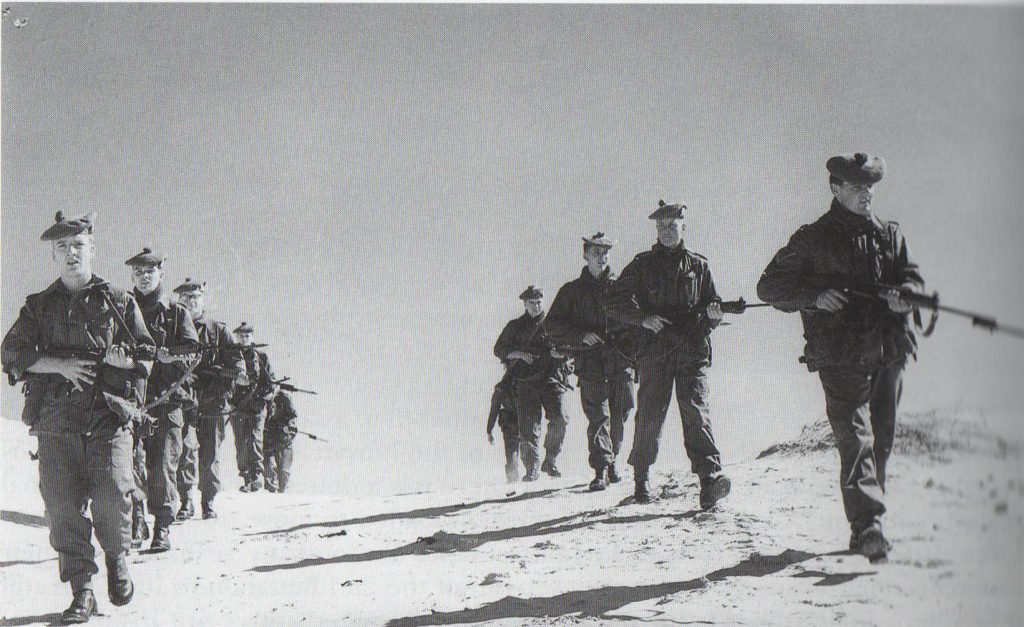
Libya 1962. The Battalion had been issued with the Self Loading Rifle (SLR) and combat suits
It was during this period that National Service ceased and the Regular Army became an all volunteer force for the first time since 1939. The Battalion was desperately understrength with only two rifle companies, each of only two rifle platoons and a support platoon. Recruiting of sufficient regulars proved a demanding and difficult task, especially when based in North Africa.
In April 1963 the Battalion returned to Britain to be stationed at Tidworth on Salisbury Plain as part of the Strategic Reserve. They now had to be organised equipped and trained for short notice deployment by air to any crises point requiring military action. In January 1964 a reinforced company trained for two months in Arctic operations at Fort Churchill on the Hudson Bay. In mid-May, during a Battalion Exercise on the Plain, a message was received ordering the Battalion to move immediately, by air, to Aden. Here tribal uprisings in the hinterland of the Aden Protectorate were threatening the road running between Aden and the garrison at Dhala on the Yemen border. A six week operation had secured the road but the dissidents remained a threat and the Radfan area of steep, high and rugged peaks had to be occupied. At the same time two rival nationalist groups, encouraged by President Nasser, began a campaign of murder and intimidation in Aden itself and its surrounding area despite the British Government’s undertaking to grant independence by 1968.
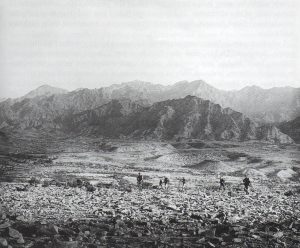
A Company patrol in the Wadi Taym, Radfan
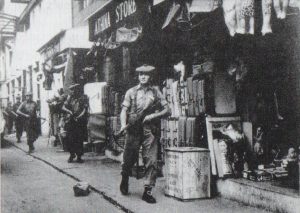
Foot patrol in Aden Town
The Battalion was complete in Aden by 24 May, less than 10 days from the first warning, with A Company already deployed at Thumier providing defence for the Radfan base. The next nine months found the Battalion carrying out four, one month long operational tours up country in the Radfan, interspersed with ‘rest’ periods in Aden town which usually involved intensive internal security duties, urban patrolling by foot and vehicle and little ‘rest’! It was like a very hot (temperature) Belfast six years early! Operations in the Radfan, with temperatures up around 100 degrees Fahrenheit, and often higher, were 75% combatting administrative, climatic and terrain conditions and 25% active patrolling and similar operations. While the Battalion was in Aden, The Pipes and Drums made two tours to Australia and South America – both ‘firsts’ in the Regiment’s history.
In February 1965 the Battalion returned to Tidworth and then, in August 1966, after work-up training in Canada, moved to Osnabruck in Germany and converted to the mechanised battalion role in AFV 432 tracked Armoured Personnel Carriers (APCs). It was the first battalion to convert direct to the role which brought the requirement for many new skills such as driving, maintenance and radio operating, together with the need to react tactically much more quickly and at greater speed than before. The success of our conversion was watched very closely but, by the end of the year, having completed a Divisional Exercise across German countryside, a new experience rather than on a training area, we were judged to have passed all tests, and received considerable praise.
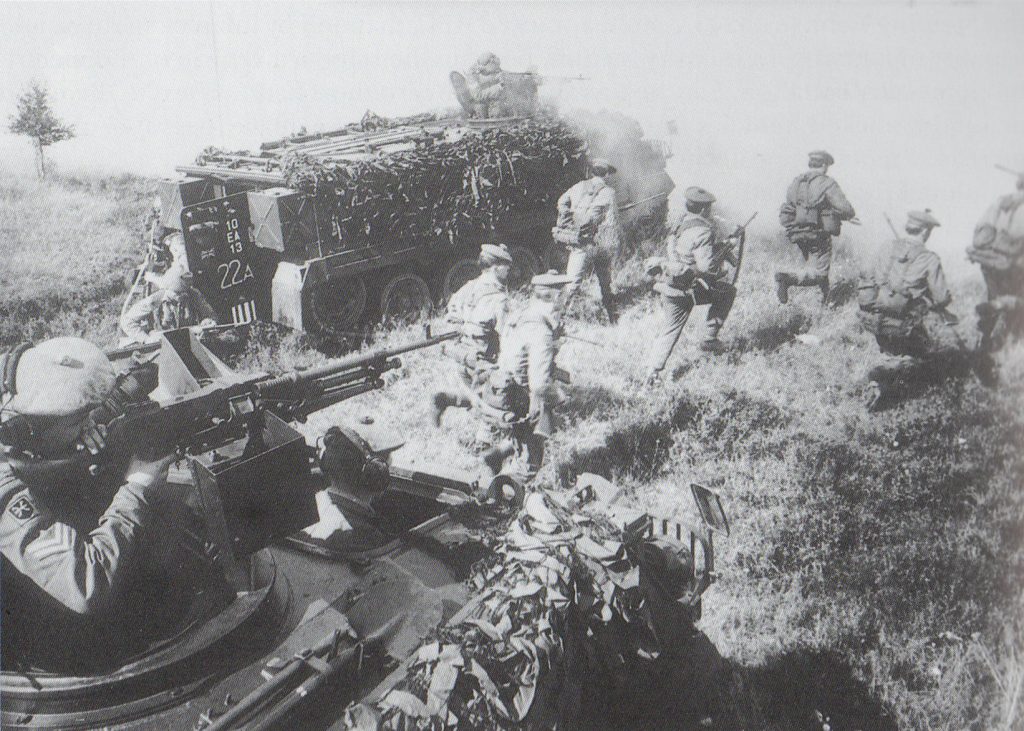
6 Platoon, B Company assaulting from FV 432s supported by pintle-mounted machine guns
In 1967 the Territorial Army was again reduced considerably in size and renamed The Territorial, Auxiliary and Volunteer Reserve (TA&VR). The Regiment’s element was reduced to only one company, A Company of The 52nd Lowland Volunteers. This was followed in early 1968 by the merger of the Lowland and Highland Brigades to form The Scottish Division exercising administrative command of all the Scottish Infantry Battalions and their two Training Depots. The following year Regimental cap badges were reintroduced to the pleasure of all Royal Scots. On 1 July 1968 HM The Queen, accompanied by HRH The Duke of Edinburgh, had unveiled an extension to the Regimental Monument commemorating the 47 years that HRH The Princess Royal had served as our Colonel in Chief from 1918-1965.
In 1969 a new era and area of operations began for the British Army when, on 14 August, 1st Battalion The Prince of Wales’s Own Regiment of Yorkshire were deployed on the street of Londonderry, in Northern Ireland, to assist the hard-pressed and exhausted Royal Ulster Constabulary (RUC) in combatting the severe rioting that was taking place. What started as inter-communal strife between Catholic Republicans demanding civil rights against Protestant Loyalists soon developed into an anti-terrorist campaign, still in support of the RUC, aimed at containing the ambitions of the Irish Republican Army and its allied organisations seeking a united Ireland. Within days of the first troops deploying, reinforcements were sent to the Province and, by October, ten battalions were helping to police Ulster. This task was to dominate British Army commitments for the next thirty-five years including over the major campaigns of the Falklands, Gulf and Iraq. The 1st Battalion, stationed in Osnabruck, were the first reinforcement battalion to deploy from BAOR arriving in Belfast on 2 March 1970. It was during this tour that the Provisional IRA emerged and commenced their campaign of bombings and shootings. The Battalion suffered five operational and two non-operational deaths during the 13 tours and a further 2 attached from other Corps were killed in accidents.
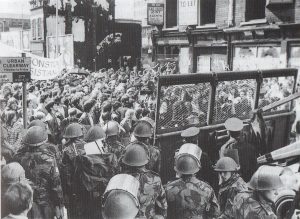
A Company on riot duties Belfast
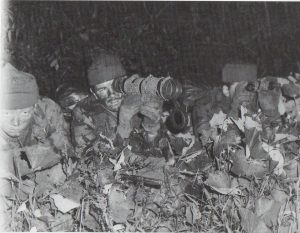
An observation post on the Fermanagh Border
The Army’s task grew from riot control and ‘Keeping the Peace’ to quelling and defeating urban and rural terrorism. Force levels in the Province varied during this time in response to the intensity of terrorist activity, peaking at some 22,000, including 27 infantry battalions or infantry roled units, over Operation Motorman in July/August 1972 when the Battalion was on a short-notice emergency tour and deployed to the Creggan Estate of Londonderry for the Operation itself. It is interesting to note that the size of this deployment with the Ulster Defence Regiment and RUC in support, was very similar to the British Army element in The Gulf War in 1991-2. Overall between 1970 and 2002 the Battalion carried out 13 operational tours in Northern Ireland, including two, two year resident tours, totalling some 71/2 years in the Province.
The Battalion returned for a second tour to Tidworth in November 1970 to take on the role as the British Allied Command Europe Mobile Force (Land) (AMF(L)) battalion. The AMF(L) was a multi-National, Brigade-sized formation whose role was to deploy in a deterrent role to the flanks of the Organisation at short-notice during an early stage of crisis to build confidence, display solidarity and, if required, fight alongside the single National forces normally deployed in those areas. The Battalion’s priority was to learn to operate in the Arctic of North Norway, followed by rather more conventional warfare in Denmark and, on the Southern Flank, Italy, Greece and Turkey. Much time was spent on major exercises, study periods and winter training, including operating on skis, over the next four years. Together with three short-notice (24 hours!) deployments to Northern Ireland, not much time was spent in Tidworth.
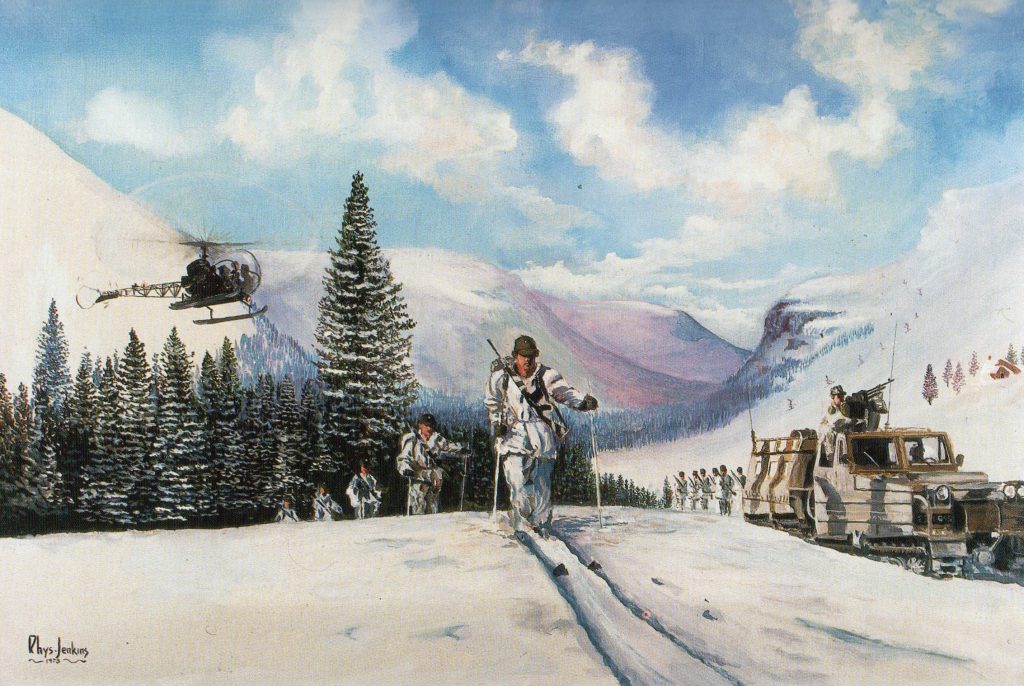
Winter Training in Norway 1970-74
During 1971 a second TA Company was added back to the Regiment when the 52nd Lowland Volunteers was enlarged to two Battalions. Both RS Companies were in the 2nd Battalion.
After four winters in the AMF(L) role the battalion was posted to Cyprus in May 1974. At that time the Battalion had had more family separation in the previous four years than any other in the Army. All ranks and their families were therefore looking forward to two years stability in the sunshine as they took over responsibility for security of the Akrotiri and Dhekalia Sovereign Base Areas. This was not to be. On 15 July President Makarios was deposed by elements of the National Guard who were still, as in 1955, seeking Enosis or Union with Greece despite Cyprus having become an independent Republic in 1961. The situation deteriorated rapidly as the National Guard – manned by Greek Cypriots, took control and forced the Turkish Cypriot minority into their enclaves. This resulted in Turkey invading the island and the division of the Republic, which continues as of the time of writing. The British Bases were not directly involved but the plight of the majority of the families, living off base in the Republic, became critical and they, together with thousands of tourists, had to be evacuated to the UK through the Bases. Throughout this period the Battalion was deployed on internal security, both on the edge of and outside the Bases, and assisting with the evacuation. They remained, mostly unaccompanied, on the island until January 1975 when they returned to Edinburgh.
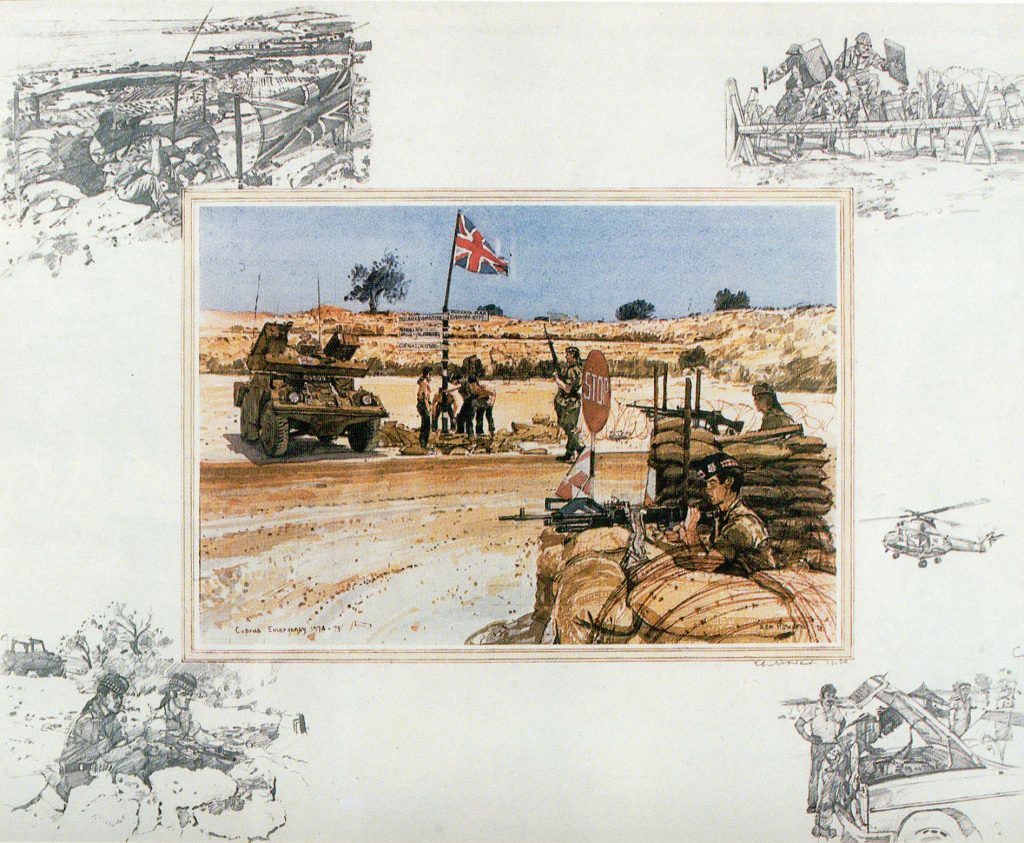
Cyprus 1974-75
During the next year in Edinburgh the Battalion was involved in Ceremonial duties, assisting the civil authorities during a strike of refuse workers in Glasgow and a fifth emergency tour in Northern Ireland. This tour, our first in South Armagh, was one of the hardest ones we undertook. Sadly we lost three soldiers when the vehicle in which they were travelling was blown up. In June 1976 the Battalion returned to Munster in West Germany where they had been stationed briefly in 1951. They formed the unique role of Nuclear Convoy Escort Battalion, mounted in Land Rovers, and working closely with 8 Regiment RCT and US troops, in providing security of resupply of warheads for the nuclear artillery. These three years, when we were removed from the Northern Ireland roster, provided a much needed respite from the intensive activity of the previous six.
The Battalion returned to Edinburgh from Munster in March 1979 to undertake more ceremonial duties and a sixth, four month tour, in Belfast, before moving in February 1981 to Ballykinler in Northern Ireland, this time as a resident battalion for two years where they formed part of the Province Reserve. Not having their own area of responsibility companies were often deployed under command of other units as reinforcements. We lost a soldier killed on one of these.
In 1983 the Battalion returned to Edinburgh to take part in the celebrations to mark the 350th anniversary of the raising of the Regiment in 1633. The climax of these was a Review of the Regiment by HM The Queen in Holyrood Park. It was at this parade that Her Majesty announced the appointment of Her daughter, HRH The Princess Anne, to be our Colonel-in- Chief.
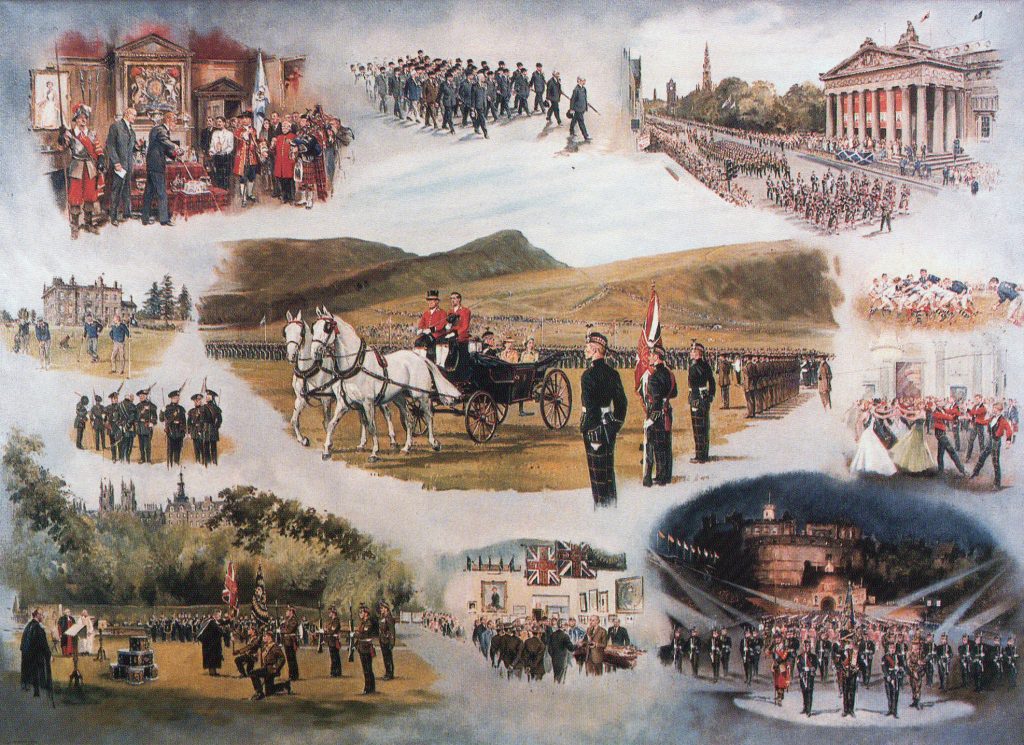
‘Royal Scots 350’ A composite painting of scenes during the 350th commemoration events
In March 1984 the Battalion deployed to the Falkland Islands and South Georgia for five months where a garrison had been maintained since the defeat of the Argentinian invasion in 1982.
In April 1985 the Battalion returned to BAOR in the role of a mechanised battalion stationed at Werl. A major armoured training exercise in Canada was followed by an eighth tour to Northern Ireland, in West Belfast, from December 1987 to March 1988. 1989 saw the issue of a new Armoured Infantry Fighting Vehicle – the Warrior – with a turret mounting a 30mm cannon which introduced a completely new range of tactics and skills to the Battalion.
POST COLD WAR 1990-2006
While the Battalion settled in enthusiastically to conversion training the debate began on the future structure and organisation of the British Army. This was put on hold after Iraq invaded Kuwait and a Coalition Force, including the 1st British Armoured Division, was assembled to eject and defeat them. The 1st Battalion deployed to Saudi Arabia in December 1990 and played a major part in the short but fierce ground war of 25-28 February, gaining more gallantry awards than any other unit in the Division. Very sadly Private Tom Haggerty was killed in an ammunition accident just after the actual fighting had finished. The full story of the Battalion’s role in The Gulf War is given in the essay ‘The Regiment’s Last Battle Honour’ in the History section of the Regimental web-site.
The Regiments Last Battle Honour
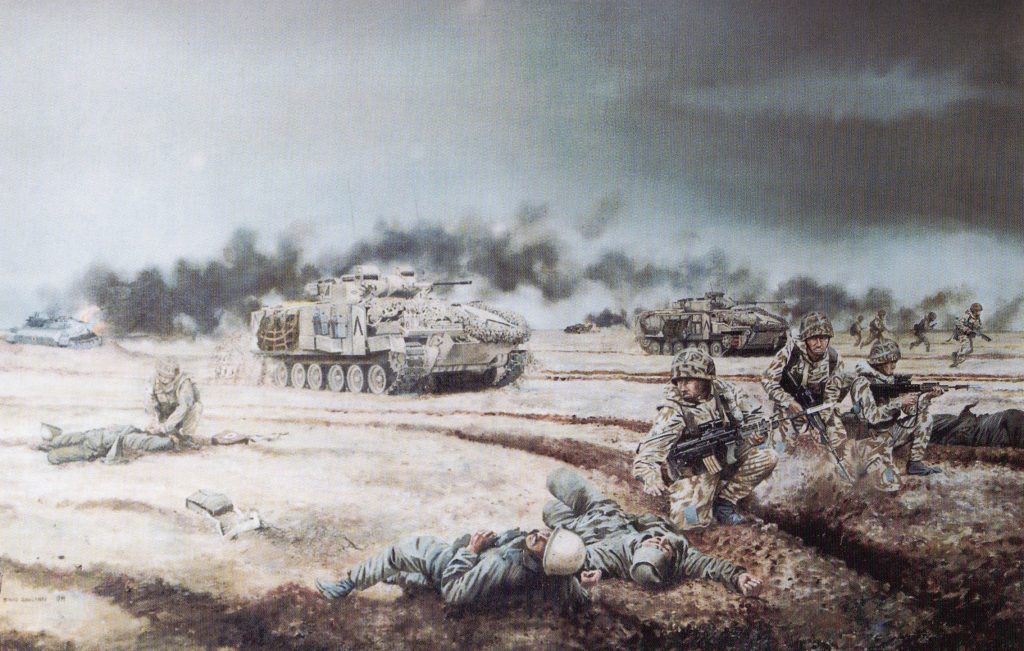
Operation Desert Storm. Royal Scots fighting onto an objective
On 27 June The Princess Royal reopened the totally refurbished Regimental Museum in Edinburgh Castle. A month later, on 23 July, it was announced that the 1st Battalion was to amalgamate with that of The King’s Own Scottish Borderers. Immediately after this depressing news, and only six months after they had fought on behalf of their country, the Battalion returned to Fort George, outside Inverness in Scotland. Then, in early 1992, the number of Royal Scots Territorials was reduced again to only one company. From September 1992 to March 1993 the Battalion undertook its ninth Northern Ireland tour in South Armagh. It was during this tour, on 3 February, and much to everyone’s joy, the planned amalgamation with the Borderers was cancelled. By early 1994, not surprisingly after the turmoil over the previous eighteen months and the lack of a defined role in an isolated barracks, poor recruiting and retention were seriously affecting manning levels in the Battalion. On 1 March the Regimental Band, along with those of all the other Scottish Infantry Regiments disbanded and formed into the Lowland and Highland Scottish Division Bands. From November 1995 to April 1986 the Battalion returned to South Armagh for its tenth Northern Ireland tour. Sadly a Junior NCO was shot and killed at the very end of the tour.
In July 1996 the Battalion at last left Fort George for Colchester where it assumed the really different role of that of an airmobile battalion. Strong in Milan anti-tank missile capability and light cross-country mobile vehicles, the Battalion was reinforced by a full company of Gurkhas who formed B Company. During the next four years the Battalion trained as a Battalion in Kenya and the USA and completed its eleventh and twelfth tours to Northern Ireland. B (Gurkha) Company were not allowed to deploy to Northern Ireland so were replaced respectively by a company from The Worcestershire and Sherwood Foresters Regiment and The Duke of Wellington’s Regiment on these tours while B Company deployed twice on operational tours to Bosnia. Separately, during their time in the airmobile role, rifle companies trained in Cyprus, the USA and on winter warfare training in Canada.
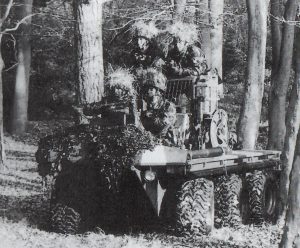
A mortar platoon ‘All-terrain Weapons Platform’
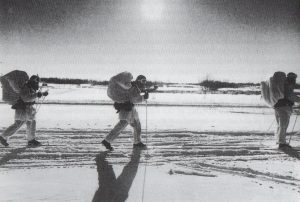
Winter warfare training, Canada, 2000
It was with great sadness that we said goodbye to B (Gurkha) Company in March 2000. Our own numbers during this period had, however, been boosted by the very welcome arrival of some fifty Fijians from 1998 onwards – the first ones having joined from the Royal Fijian Military Forces Band during their participation in the Edinburgh Military Tattoo that year. In later years they were joined by a number of other recruits from the Commonwealth, notably Kenya and South Africa.
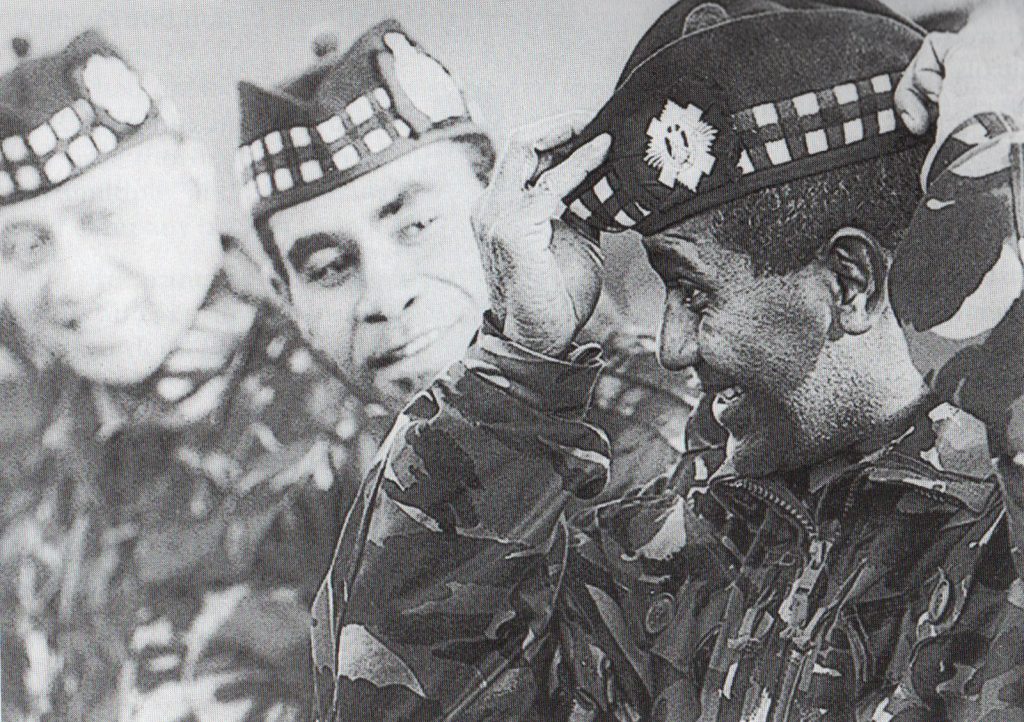
The first Fijians arrive in 1999
The Battalion moved to Ballykelly, near Londonderry for its thirteenth (final) tour, and second two-year residential one, in August 2000. By the time the Battalion arrived the IRA had ceased to be tactically relevant but there was always the threat to the ongoing peace process from dissident groups from both sides. While continuing to maintain a high operational level throughout the tour the opportunity was taken to encourage sport. With the arrival of the Fijians the Battalion won both the Army and, outstandingly, the Middlesex Rugby Sevens. Adventurous training was enthusiastically undertaken, apart from much use of local facilities within the Province, activities included gliding in Oxfordshire and bobsleighing at Lillehammer in Norway and expeditions as far afield as India, Jordan, Egypt, Spain, Ascension Island, France and sea sailing off Scotland.
In April 2002 the Battalion returned to the excellent Dreghorn Barracks in Edinburgh. The priority, in spite of excellent retention rates in Ballykelly and, at 140 in 1991, the best enlistment figures for over a decade, was very much recruiting. Behind the logo ‘The Boys are Back in Town’ the Battalion marched through Edinburgh in combat kit with Colours flying and bayonets fixed to remind the City that we were home. Soon afterwards a composite Company trained in Belize before the Battalion settled down to prepare for a six-month tour in Bosnia. They deployed in November and rapidly established their strong presence in a delicate political arena with some determined searches and large finds including within the Republika Srpska (Bosnian Serb) Houses of Parliament and their Ministry of Defence.
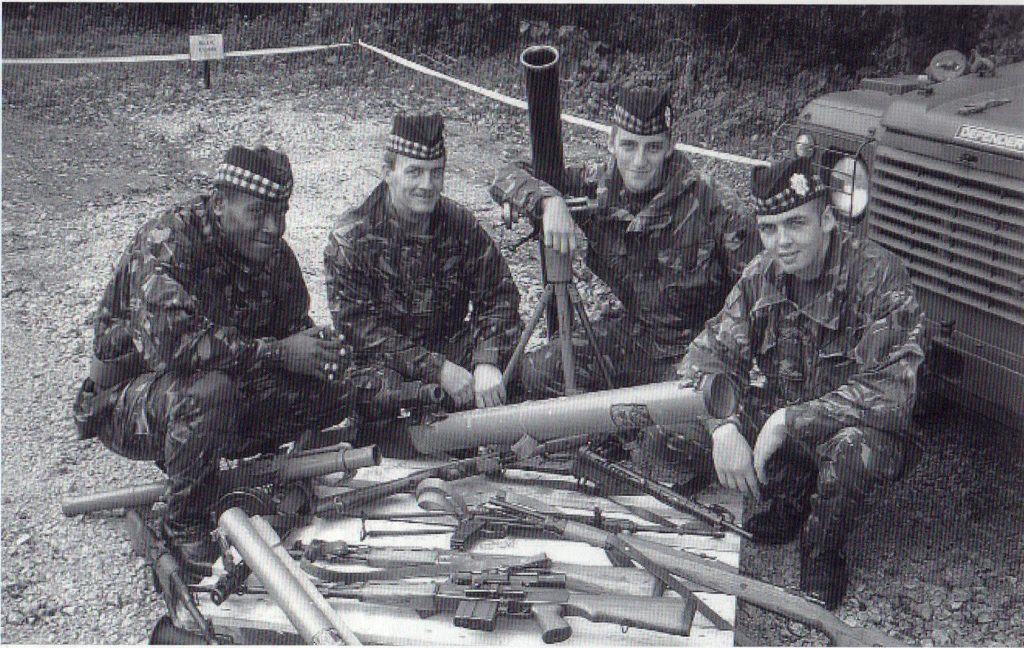
Displaying one of the weapon finds
They returned to Edinburgh in April 2003 and the delayed presentation of new, and what was, sadly, to prove to be the Regiment’s final Colours, took place in glorious sunshine within Dreghorn Barracks on 4 July. Before the Presentation the Battalion had been warned for an emergency tour in Iraq from November, not as a formed battalion but as three separate companies reinforcing other units. A very small Battalion HQ deployed filling posts within the Divisional HQ from which they could oversee Battalion administrative matters on the ground. Preparation and training were fitted around provision of Her Majesty’s Guard at Balmoral and support to The Edinburgh Military Tattoo. Deployment was in November which meant that elements of the Battalion had operated in jungle, mountains and desert, along with a substantial element of ceremonial, all within the space of eighteen months, and a major change from the Northern Ireland treadmill of the previous ten years. The three companies all had very different, successful but busy tours under command of various units, mostly Royal Artillery and Royal Armoured Corps operating in the infantry role but also, in C Company’s case, under command of a Danish Battalion, probably a unique event in the Regiment’s long history. The deployment did not however help Battalion cohesiveness and the major task on the return of the three companies to Dreghorn in April was to rebuild that.
That rebuilding came rapidly with a Battalion training exercise in Galloway followed by a major all-arms test exercise on Salisbury Plain. On 21 July 2004, in a statement to the House of Commons, the Secretary of State for Defence delivered a long awaited statement, Options for Change, on yet another restructuring of the Army – in the infantry’s case to lead to a reduction from 40 to 36 regular battalions. While the detail was still supposedly to be decided it was clear that the Scottish Regiments were under severe pressure and could lose two of their six regular battalions. Throughout the rest of 2004 the 1st Battalion concentrated on doing things that had not been possible for a bit. The sevens team won the Army competition for the sixth time running, companies held training camps, adventure training took place and, critically, individuals undertook career courses. Halfway through this period the Battalion was warned as a standby reserve for Iraq from January to July 2005 and training swung into the, by now, well-established preparatory path leading to deployment on operations. This allowed the serving members to concentrate on something positive for the future while the retired members of the Regiment, meeting within the Regimental Council, coordinated the Campaign to save not just The Royal Scots but all the existing 40 battalions which were already desperately over-stretched against existing operational commitments. On 15 December, carefully timed just as the House departed on its Christmas Break, the announcement came that The Scottish Division would lose one battalion and merge into The Royal Regiment of Scotland of seven battalions, five regular and two reserve (formerly territorial). The reduction to be achieved through the merger of the 1st Battalions of The Royal Scots and The King’s Own Scottish Borderers. Regimentally the decision was made that we would continue to fight against any reduction in the infantry but do nothing that would damage the difficult job of uniting the two Battalions harmoniously. On Saturday18 December the Regimental Association Pipe Band led a march of 3,500 supporters of the ‘Save the Scottish Regiments’ campaign along Princes Street for a rally in the Gardens. The Royal Scots contingent of 800, by far the largest, was at the front and, being the last Saturday before Christmas, the Street was packed with shoppers who to a man (and woman) applauded and supported us the whole way. For a complete record of the events leading up to and following the announcement of Options for Change see part 2 of Pontius Pilate’s Bodyguard (PPB) Vol 3 – The Regimental Campaign.
In the event the 1st Battalion were not required in Iraq and reverted to a period of uncertainty and a multitude of support and assistance tasks which sapped at the hard won battalion cohesion. It was then warned for a Northern Ireland tour in South Armagh from January to July 2006 which at least allowed focused training and protection from other commitments. Iraq and Afghanistan were now assuming ever more importance as operational commitments and, in early December, Northern Ireland was changed to Iraq with the Battalion, less one Company, to be based in a reserve role outside Basra and one company in Baghdad. Deployment was in early January and was followed by a busy, varied and operationally active tour. The rugby team was initially left with the rear party and won the Army Rugby Cup for the first and only time in the Regiment’s history – and the sevens for an unprecedented seventh year in a row.
On the 28 March 2006, Regimental Day, while the 1st Battalion were deployed on operations in Iraq, and after 373 years to the day of unbroken service to Sovereign and Country since King Charles 1 had signed his Warrant to raise Hepburn’s Regiment, our direct forbears, the Regiment merged with the five other surviving Regular and two Territorial Regiments of Scottish Infantry to form The Royal Regiment of Scotland, abbreviated to SCOTS. As it would have been hugely difficult to merge the Battalions while on operations, The 1st Battalion was temporarily re-titled The Royal Scots Battalion, The Royal Regiment of Scotland (and 1KOSB similarly temporarily renamed – see Aftermath below). The 28th March is now celebrated as Formation Day by the new Regiment and marks their inheritance from us of the position of the Senior Infantry Regiment in the British Army.
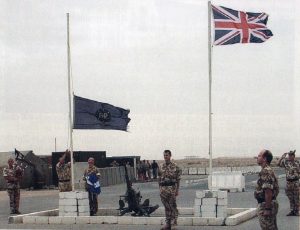
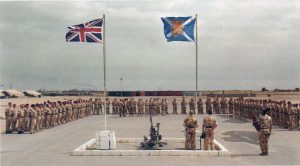
Lowering of the old and raising of the new Regimental Flags
Shaibah Base, Basra, 28 March 2006
Aftermath:
On 1 August, Minden Day, celebrated by The King’s Own Scottish Borderers as their Regimental Day, the two battalions merged to form The Royal Scots Borderers, 1st Battalion the Royal Regiment of Scotland (1 SCOTS).
On 9 May 2007 HRH The Princess Royal, now The Royal Patron of The Regimental Association, unveiled two plaques on the Regimental Monument inWest Princess Stree Gardens The first, of carved stone, marked the end of our 373 years of independent service and the merging of the Regiment into The Royal Regiment of Scotland while the second, a bronze plaque, commemorated her 23 years as Colonel-in-Chief. The opportunity was also taken to add the final Gulf Battle Honours and the remaining places we had served to the Monument.
Part 3 – Epilogue - of PPB Vol 3, published in 2007, completed the story of the Regiment and explains how elements of the Regiment, such as items of dress, have been incorporated into SCOTS and the detail behind the actual formation of the new Battalion.
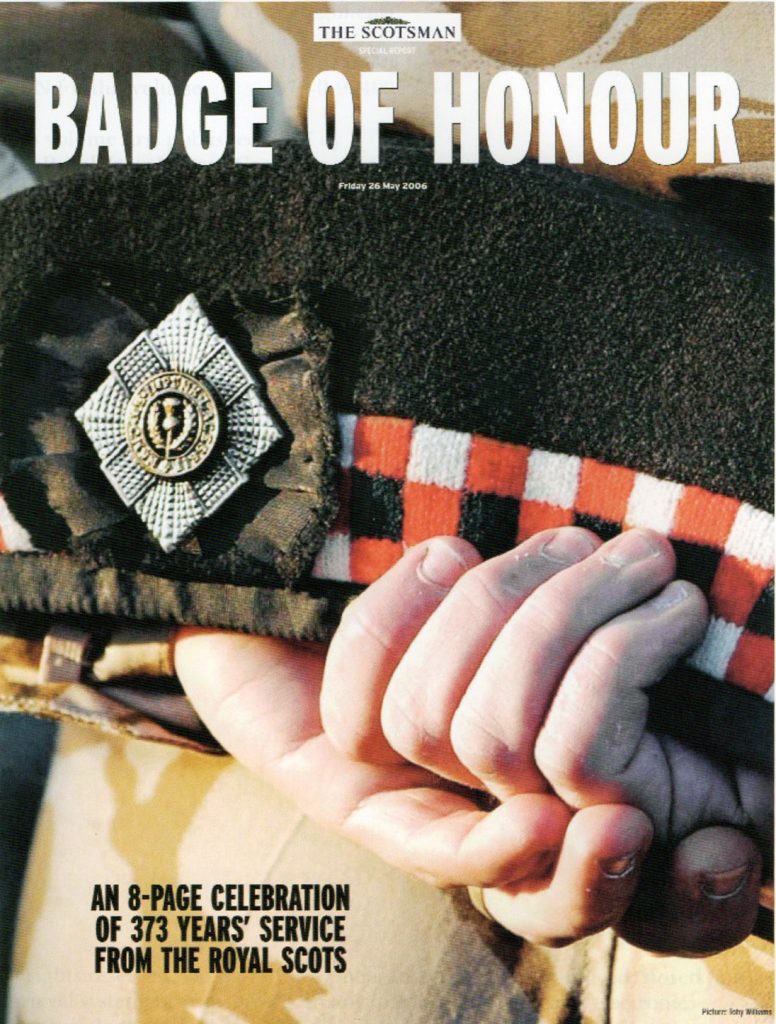
Badge of Honour
Further Reading: Greater detail on the whole of the period covered in this essay can be found in the relevant copies of the Regimental Journal, The Thistle. Details can be found on the Regimental web site at www.theroyalscots.co.uk
Pontius Pilate’s Bodyguard (PPB).
Pontius Pilate’s Bodyguard, published, two volumes in 2001 and the third in 2007, is the definitive History of The Royal Scots. Volume 1 covers the period from 1603 when the predecessors of the Regiment fought for Gustavus Adolphus of Sweden in the Thirty Years War to the end of World War 1 in 1919. Volume 2 covers 1918 to 2000 and Volume 3 takes our story from 2000 to the merger of the Regiment into The Royal Regiment of Scotland in 2006 and the immediate aftermath of that merger. All three are richly illustrated in both colour and black and white and enhanced with a total of 86 maps to assist the reader.
Copies of the Three Volumes are available from:
The Royal Scots Museum Office
The Old Provost Marshal’s House,
The Castle,
EDINBURGH
EH1 2YT
at a cost of £25 for the three. P&P is additional and, due to their weight, can be expensive, especially for overseas delivery. Those wishing copies are therefore advised to collect them from the Museum Office, or have them collected for them. If advised in advance free access can be arranged into the Castle but only to the Museum.
